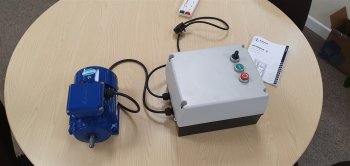izafireman
Well-Known Member
Following on from the post by the Boss regarding disc grinder plates and the bonding of papers to the surface plate of one I have been looking into making one as I am in the UK and to buy a US model/shipping would be hugely expensive.
So, what I am looking to do is buy the hub/plates from the US from Rod Nielson and then obtain a good motor over here along with VFD controller and get one built for me, maybe even do the job myself.
What I would like to know from the guys that use them what are the advantages, or if any disadvantages and any tips when using them, do I need a table etc.?
I would imagine the main use for mine,if I do this would be for sanding down stabilised wood as a the moment using pre bought tacky backed papers its costly due to the price of the papers.
Am I also correct that they are very good for flattening both scales and blanks?...…the disc sander I have at present certainly isn't good for this as it has one speed which is fast! and so it just grabs materials.
I believe some also grind knives out on them too as opposed a belted machine?
So any advice welcome or tips.
Many thanks.
So, what I am looking to do is buy the hub/plates from the US from Rod Nielson and then obtain a good motor over here along with VFD controller and get one built for me, maybe even do the job myself.
What I would like to know from the guys that use them what are the advantages, or if any disadvantages and any tips when using them, do I need a table etc.?
I would imagine the main use for mine,if I do this would be for sanding down stabilised wood as a the moment using pre bought tacky backed papers its costly due to the price of the papers.
Am I also correct that they are very good for flattening both scales and blanks?...…the disc sander I have at present certainly isn't good for this as it has one speed which is fast! and so it just grabs materials.
I believe some also grind knives out on them too as opposed a belted machine?
So any advice welcome or tips.
Many thanks.

